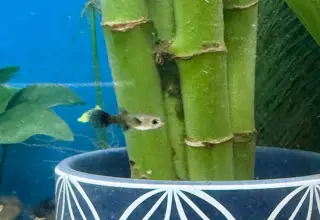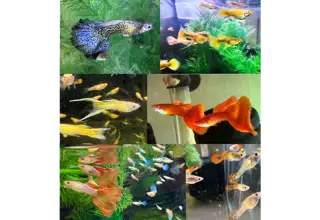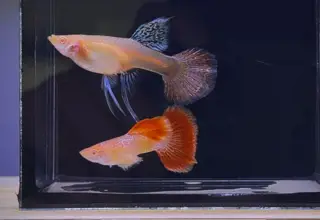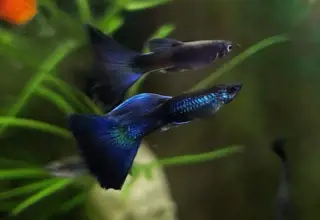Dwarf Hairgrass vs Mini Dwarf Hairgrass: Similarities and Differences
Posted by Miles Harrison on 12/08/2022
If you’re looking for a carpeting plant for your planted tank, you’ve probably already heard about dwarf hairgrass (scientific name: Eleocharis parvula). Known for its grass-like appearance, this species has been a favorite among planted tank hobbyists for many years, and it’s been featured in many award-winning tanks.
With new aquarium plants being introduced every year, it’s no surprise that we’ve seen a rise in the popularity of new species and plant variants. One of these variants is commonly referred to as Mini Dwarf Hairgrass (scientific name: Eleocharis Belem) and it shares some unique similarities and differences with Eleocharis parvula. In this post, we’re going to cover the similarities and differences between these unique plant species.
January's Giveaways on Light Fish
What is Mini Dwarf Hairgrass?
Mini Dwarf Hairgrass (scientific name: Eleocharis belem) is a slow-growing carpeting plant that has leaves that tend to grow more horizontally compared to traditional Dwarf Hairgrass (Eleocharis parvula).
Dwarf Hairgrass is often used to refer to 3 different types of plants, Eleocharis parvula, Eleocharis belem, and Eleocharis acicularis. Both Eleocharis belem and Eleocharis acicularis are commonly referred to as mini dwarf hairgrass, in this post, when we discuss Mini Dwarf Hairgrass, we'll be referring to Eleocharis belem.
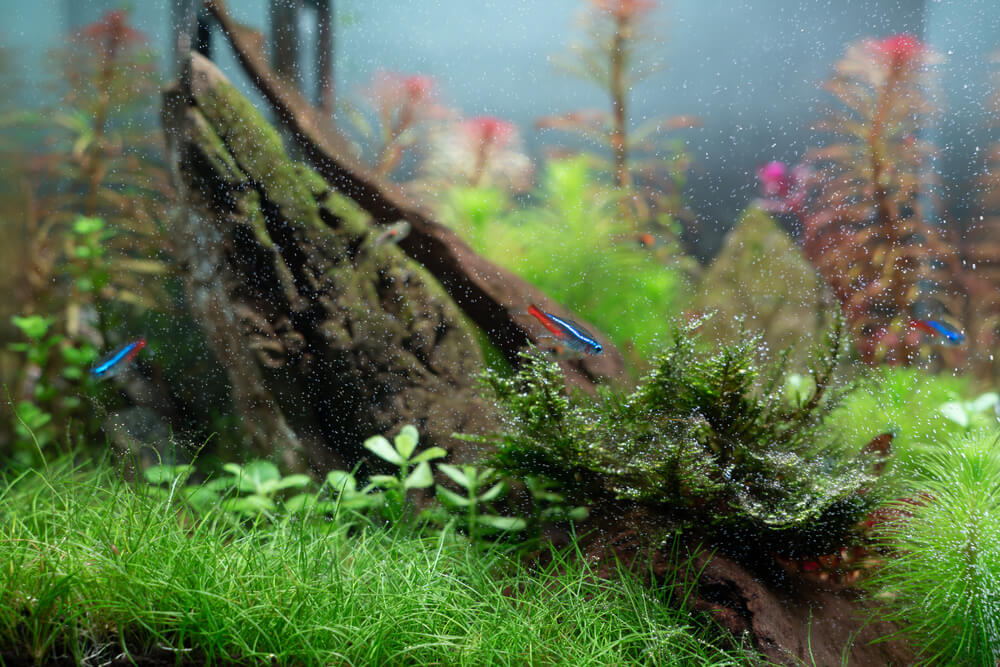
Dwarf Hairgrass vs Mini Dwarf Hairgrass: What’s the Difference?
There are three distinct differences between dwarf hairgrass and mini dwarf hairgrass: size, growth rate, and appearance.
Dwarf hairgrass will grow to be much larger, and can reach about 4 inches in length. Mini dwarf hairgrass will rarely reach over 3 inches in height, it's a slow grower, and even with regular trimming and a high-light CO2-injected environment, dwarf hairgrass will only send off a few runners each week. It’s much slower at carpeting the substrate compared to fast-growing plants such as Glosso.
Mini Dwarf Hairgrass also looks slightly different. As the leaves of this plant grow, the tips tend to grow horizontally rather than vertically. In the more common Dwarf Hairgrass (Eleocharis parvula) the leaves only grow vertically.
Best Option for Nano Tanks
If you’re looking to add a foreground plant to your nano tank, we highly recommend Mini Dwarf Hairgrass. Since it’s smaller than regular Dwarf Hairgrass, it won’t look overgrown in a small nature aquarium.
We think it looks fantastic in tanks up to 20 gallons in size, and since it keeps a low profile you can add red aquarium plants or green stem plants such as hygrophila salicifolia and taiwan lilies without overcrowding the aquarium.
🛒 Shop Freshwater Fish on Light Fish
Best Option for Large Tanks
If your aquarium is larger than 20 gallons, go with regular Dwarf Hairgrass. Since it’s a bit taller than the mini version, peaceful schooling fish will enjoy swimming through its leaves along the substrate. It's even possible for dwarf hairgrass to survive without CO2.
The larger leaves will give a nice place of refuge for more sensitive inhabitants, such as orange pumpkin shrimp or black mystery snails.
Best Option for Ease of Maintenance
If you’re looking for a low-maintenance plant, go with Mini Dwarf Hairgrass. Since the mature leaves of the plant tend to grow horizontally rather than vertically, you won’t have to trim this plant as frequently as regular dwarf hairgrass.
We’ve kept this plant in high-light CO2 injected tanks and rarely have had to trim. Once you’ve trimmed this plant to grow to your liking, there is very little else you need to do besides providing nutrients to care for this plant.
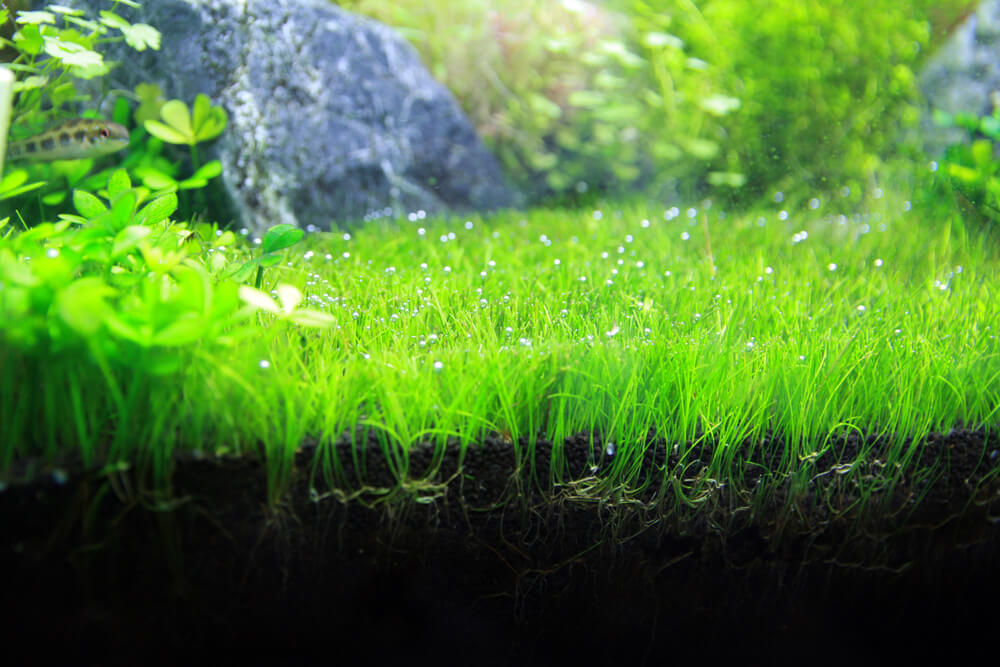
Best Option for Shrimp Keeping
If you’re keeping shrimp in a community tank, or maybe along with some peaceful schooling fish like blue emperor tetras, we recommend going with the regular dwarf hairgrass.
Occasionally, even the most peaceful fish may chase or try and eat newborn shrimp. Having thick foliage will provide juvenile shrimp a place of refuge, and for that reason, we recommend the taller Dwarf Hairgrass.
Price Comparison
You can expect to pay around $8 for a 2.5 inch by 2.5 inch cup of Mini Dwarf Hairgrass, and about $10 for a 2.5 inch by 2.5 inch cup of Dwarf Hairgrass.
Dwarf Hairgrass tends to be a bit more popular, and vendors typically charge a higher price. Dwarf Hairgrass Belem is rare, so don’t be surprised if it takes a while to find a vendor for this plant (hint: sometimes sellers list them for sale in our freshwater plant section on Light Fish).
January's Giveaways on Light Fish
Conclusion
Now that you're an expert in knowing the differences between Dwarf Hairgrass and Mini Dwarf Hairgrass, which do you think you’ll choose? Both have their unique advantages and disadvantages, but we guarantee you’ll love whichever one you pick.
If you’re interested in learning more about aquatic plants, or planted tanks in general, check out our community forum where we discuss how to ship aquatic plants and other topics related to aquatic plant keeping.
January's Giveaways on Light Fish


